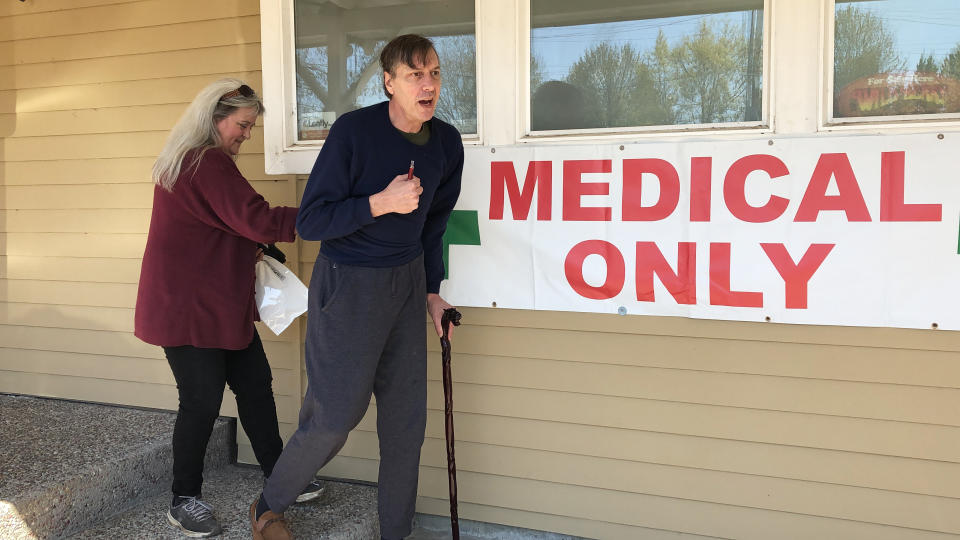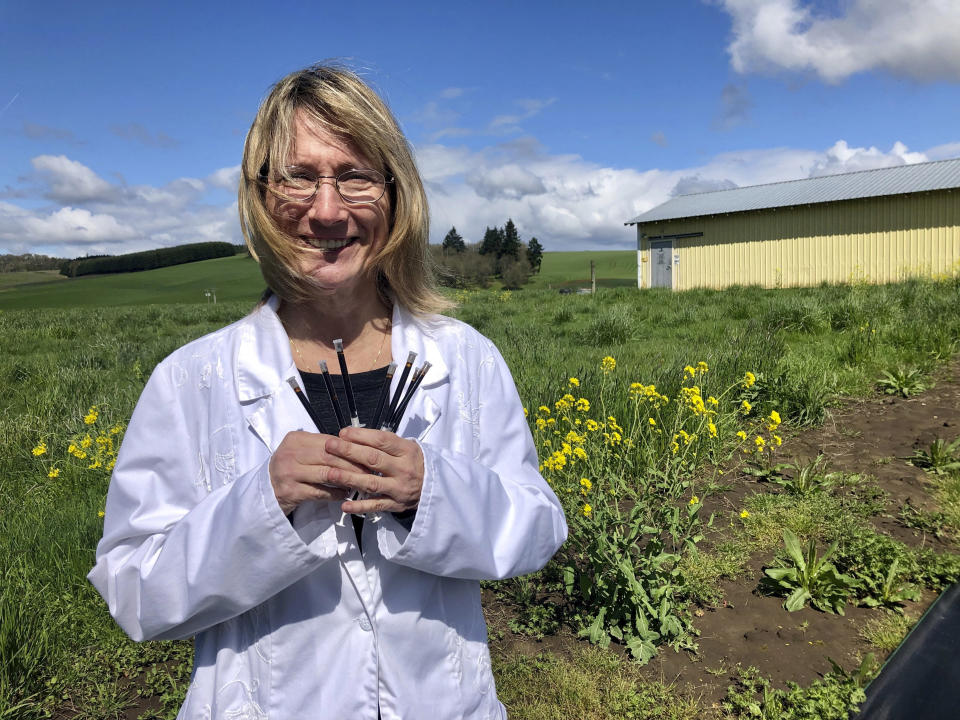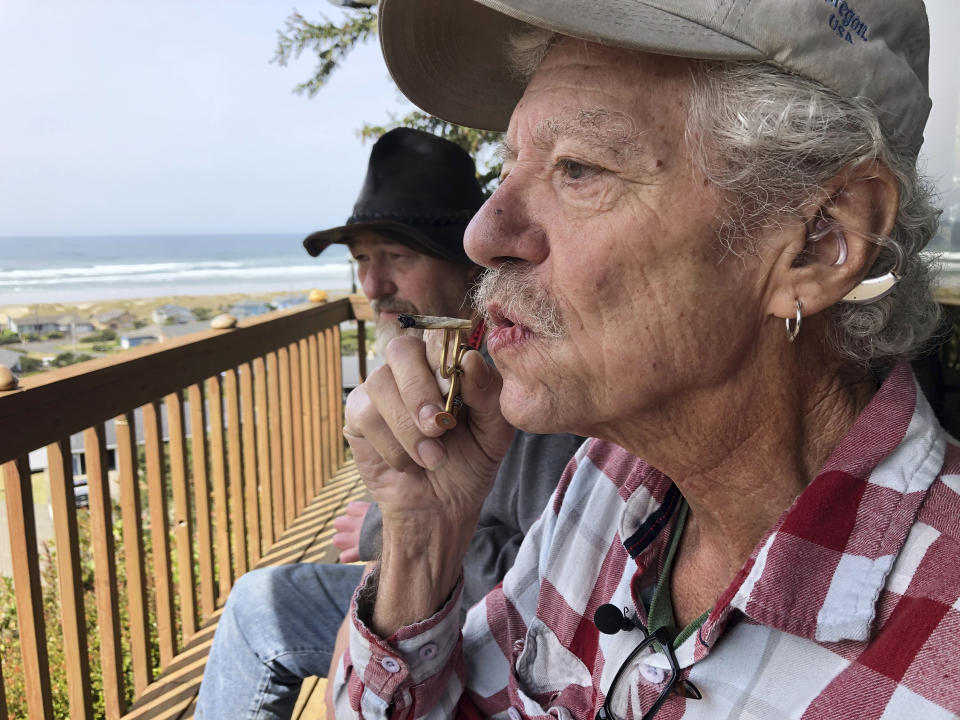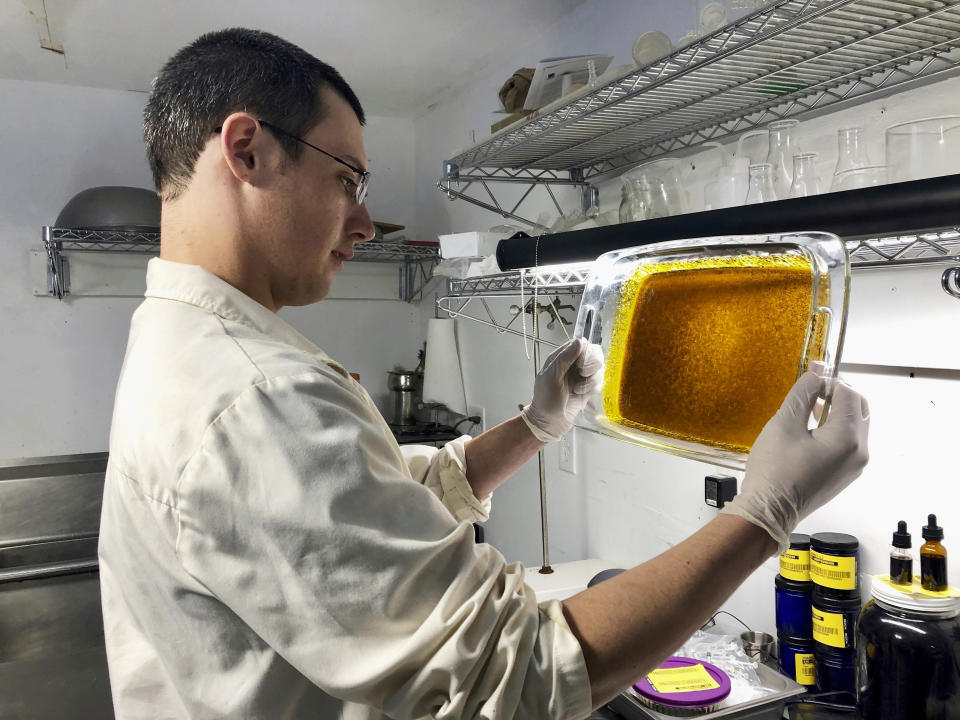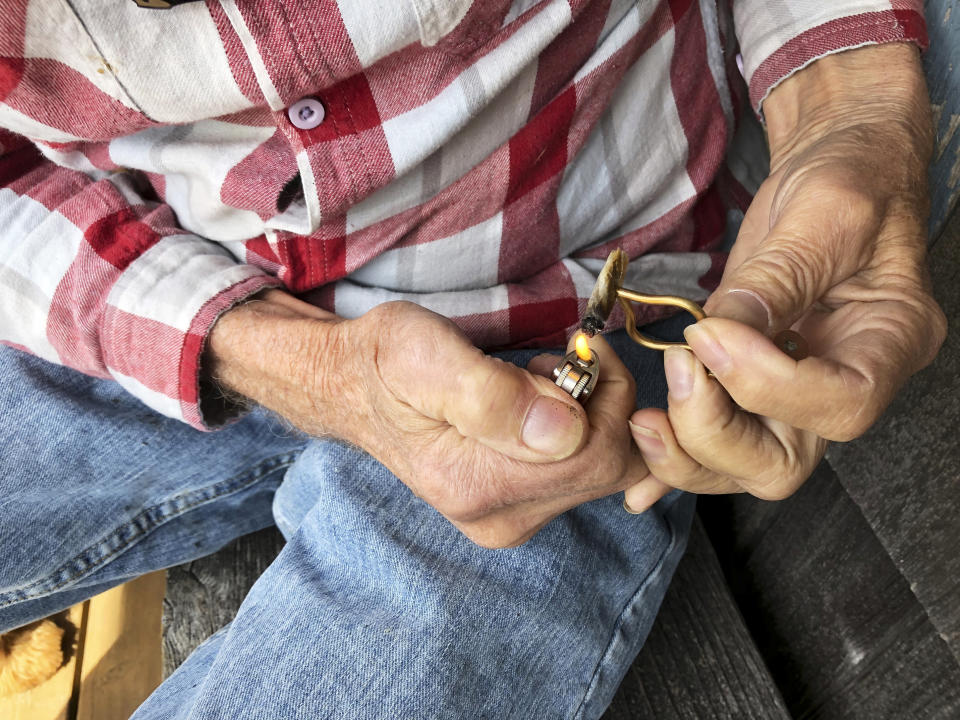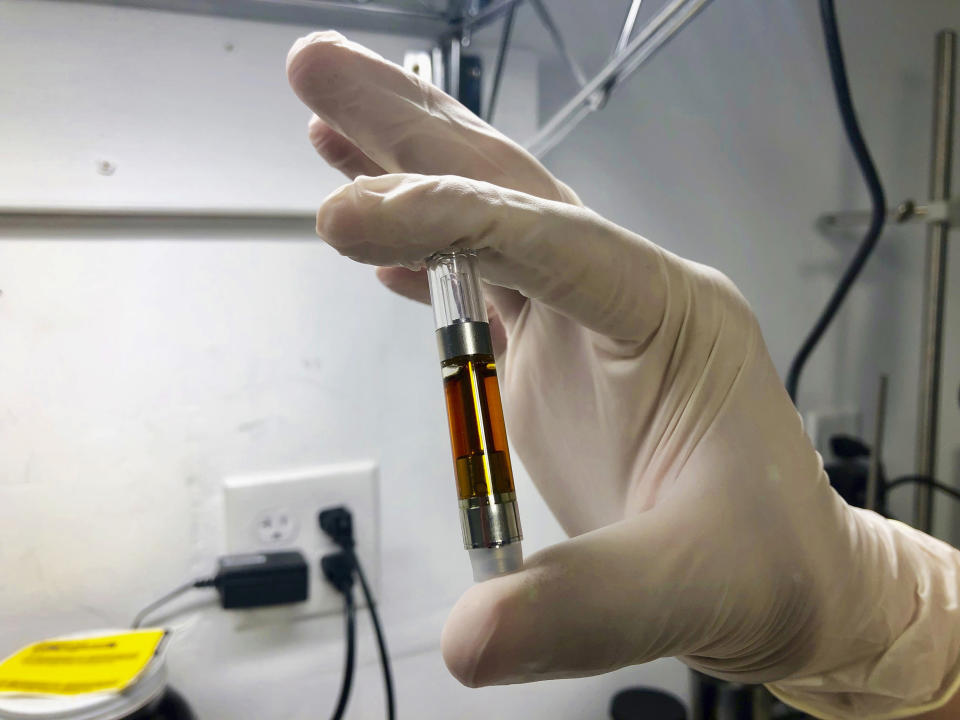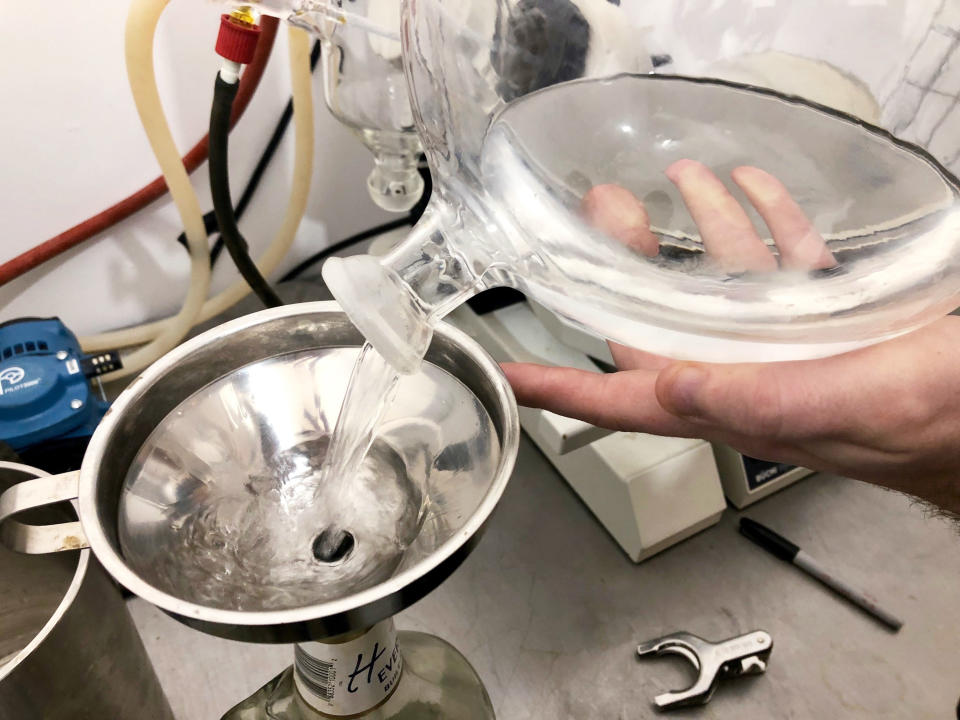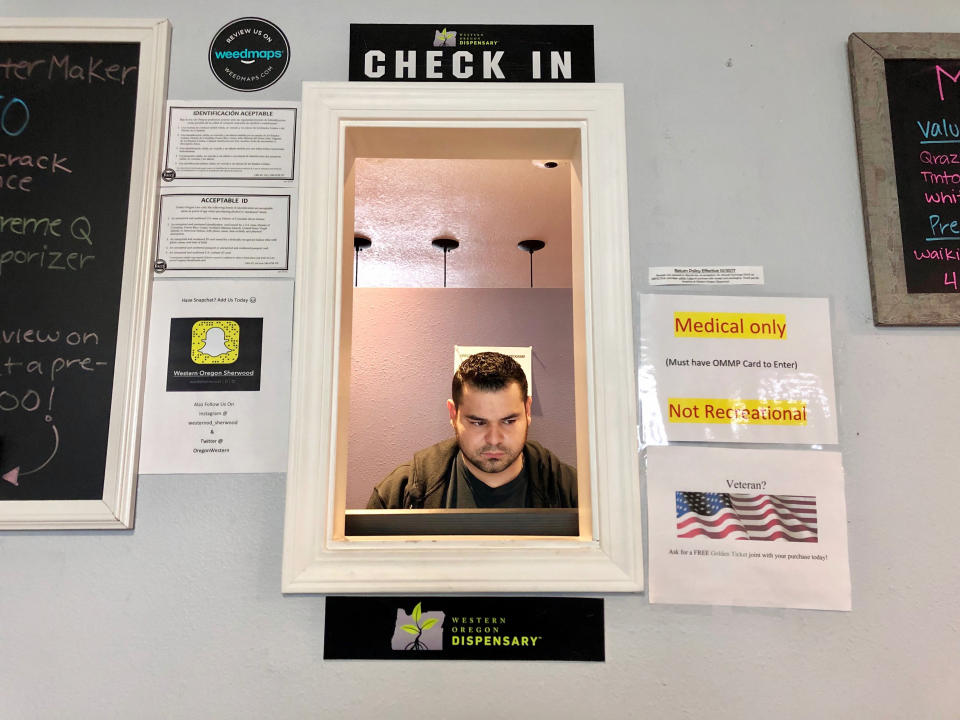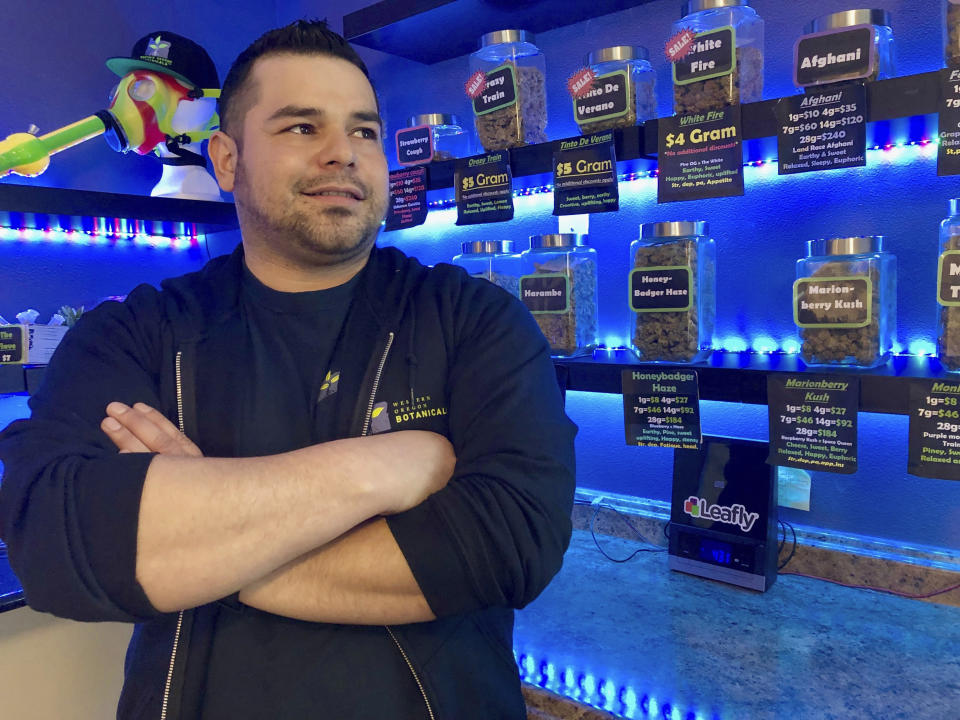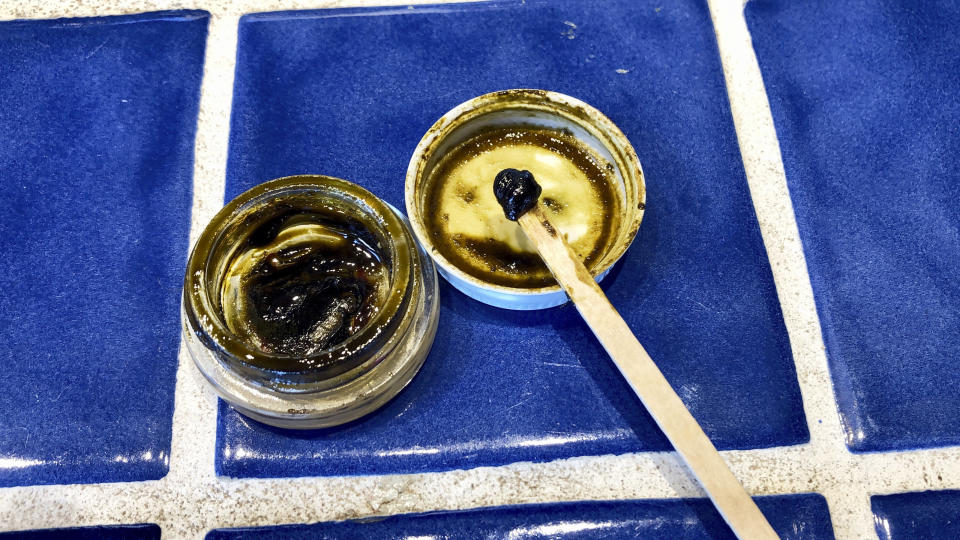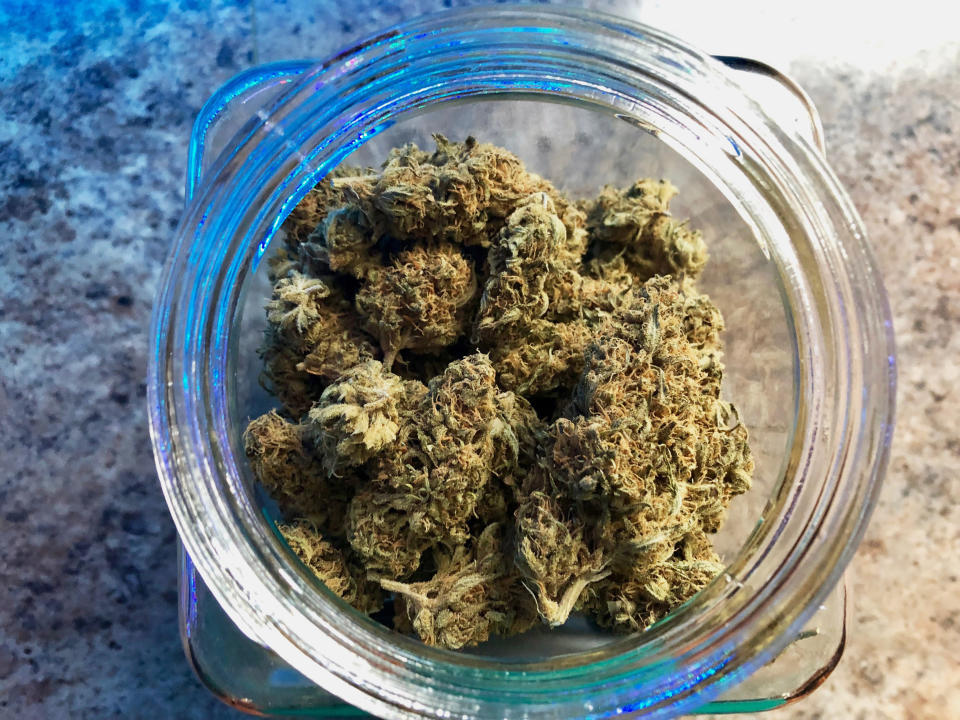AP analysis: Medical pot takes hit when weed legal for all
PORTLAND, Ore. (AP) — When states legalize pot for all adults, long-standing medical marijuana programs take a big hit, in some cases losing more than half their registered patients in just a few years, according to a data analysis by The Associated Press.
Much of the decline comes from consumers who, ill or not, had medical cards in their states because it was the only way to buy marijuana legally before broad legalization. But for people who truly rely on marijuana to control ailments such as nausea or cancer pain, the arrival of so-called recreational cannabis can mean fewer and more expensive options.
It's a paradox playing out nationwide as more states take the leap from care-centered medical programs to recreational models aligned with a multibillion-dollar global industry.
States see a "massive exodus" of medical patients when they legalize marijuana for all adults — and then, in many cases, the remaining ones struggle, said David Mangone, director of government affairs for Americans for Safe Access.
In Oregon, where the medical program shrank the most following recreational legalization, nearly two-thirds of patients gave up their medical cards, the AP found. As patients exited, the market followed: The number of medical-only retail shops fell from 400 to two, and hundreds of growers who contracted with individual patients to grow specific strains walked away.
Now, some of the 28,000 medical patients left are struggling to find affordable medical marijuana products they've relied on for years, particularly the specialized oils, tinctures and potent edibles used to alleviate severe illnesses.
"Lots of people have started trying to figure out how to make these concentrates and edibles themselves in their kitchen," said Travis MacKenzie, who runs TJ's Gardens, which provides free medical cannabis to children with epilepsy. "There are things that we don't really want people to do at home, but the market conditions are such that people are trying to do more at home."
The numbers compiled by the AP through public records requests and publicly available documents provide a snapshot of the evolution of marijuana as more states — Michigan was last in the door, and Illinois is about to follow — legalize pot for all adults.
Ten states have both medical and recreational markets. Four of them — Oregon, Nevada, Colorado, Alaska — have the combination of an established recreational marketplace and data on medical patients. The AP analysis found all four saw a drop in medical patients after broader legalization.
In Alaska, the state with the second-biggest decline, medical cardholders dropped by 63% after recreational sales began in 2016, followed by Nevada with nearly 40% since 2017 and Colorado with 19% since 2014.
The largest of all the legal markets, California, doesn't keep data on medical patients, but those who use it say their community has been in turmoil since recreational pot debuted last year. That's partly because the state ended unlicensed cannabis cooperatives where patients shared their homegrown pot for free.
There is limited scientific data backing many of the health claims made by medical marijuana advocates, and the U.S. government still classifies cannabis in any form as a controlled substance like LSD and cocaine.
Still, the popularity of medical pot is rising as more states legalize it. There are 33 such states, including the politically conservative recent additions of Oklahoma and Utah. Oklahoma has among the more liberal guidelines for use and has approved more than 100,000 patient licenses since voters backed legalization last June.
Getting a precise nationwide count of medical patients is impossible because California, Washington and Maine don't keep data. However, absent those states, the AP found at the end of last year nearly 1.4 million people were active patients in a medical marijuana program. The AP estimates if those states were added the number would increase by about 1 million.
"Patients have needs. Consumers have wants," said Anthony Taylor, a medical marijuana advocate who sits on the Oregon Cannabis Commission. "Patients are in crisis right now."
Bill Blazina, a Navy veteran, used the state's medical program in 2013 when he was diagnosed with esophageal cancer. But the 73-year-old grandfather found the landscape had changed dramatically when he was diagnosed recently with a new cancer in his lung.
The highly concentrated marijuana oil he took before — and wanted to take again — was selling for $60 a gram, his daily dose. A two-month supply would cost thousands at a retail pot shop, so Blazina connected with what he calls a "compassionate grower" who sold him the same amount at cost for $750, a transaction that fell in a legal gray area.
"I didn't even know his name," said Blazina, sitting in a rocking chair in his home in the tiny coastal town of Waldport. "I met him ... and he'd bring it to me and smile, and I'd give him money and say, 'Thank you,' and I'd be on my way."
Now, he's learned how to make it himself: He and his neighbor combine their total of eight legal plants, pulverize a pound (0.45 kilograms) of marijuana flower, steep it in grain alcohol, strain it and then simmer the resulting mix of alcohol and plant juice in a rice cooker until only dark black oil is left.
A pound of that flower at a retail store would be about $2,000, Blazina said.
"I think the regulations should go toward more access and how do we get more access, realistically, for the people who need it medically," he said. "It prohibits people who don't have the ability to grow from getting the medicine they need because it drives the price up — and I don't see that as being helpful at all."
___
Kastanis is an AP data reporter in Los Angeles. Associated Press writers David Eggert in Lansing, Michigan, and Michael R. Blood in Los Angeles contributed to this report. Flaccus, Kastanis and Blood are members of AP's marijuana beat team. Follow Flaccus on Twitter at https://www.twitter.com/gflaccus . Follow AP's complete marijuana coverage: https://apnews.com/Marijuana .

